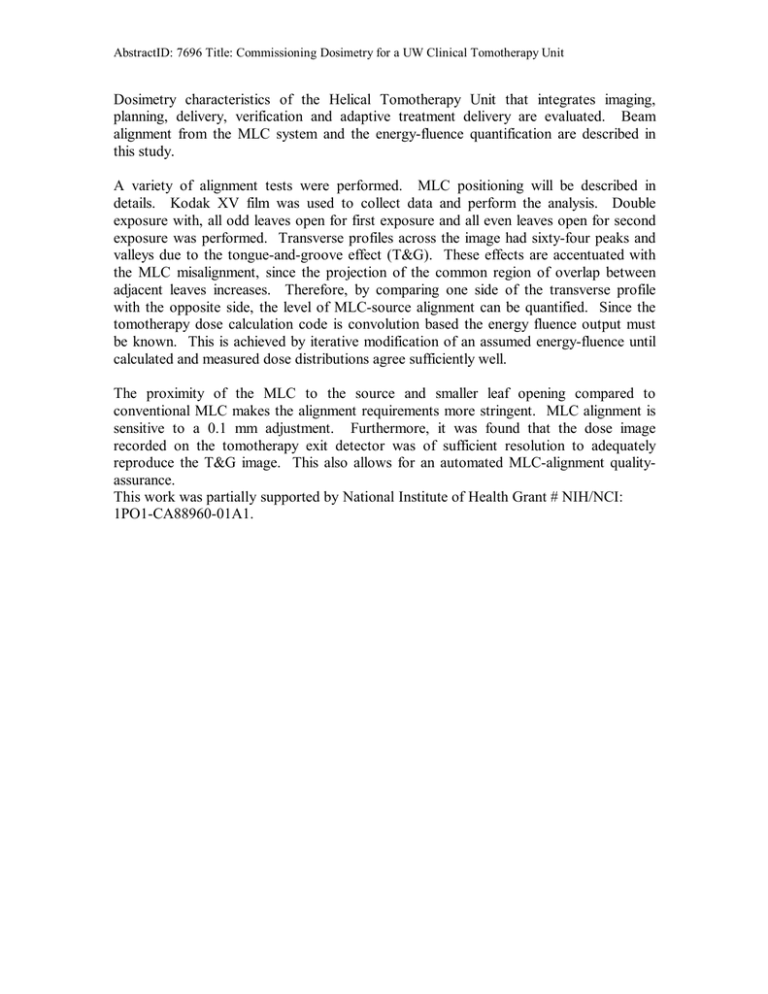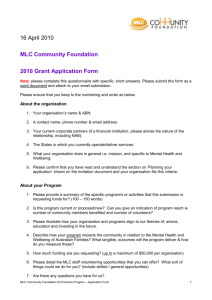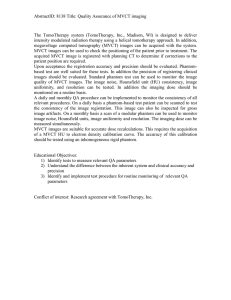Dosimetry characteristics of the Helical Tomotherapy Unit that integrates imaging,
advertisement

AbstractID: 7696 Title: Commissioning Dosimetry for a UW Clinical Tomotherapy Unit Dosimetry characteristics of the Helical Tomotherapy Unit that integrates imaging, planning, delivery, verification and adaptive treatment delivery are evaluated. Beam alignment from the MLC system and the energy-fluence quantification are described in this study. A variety of alignment tests were performed. MLC positioning will be described in details. Kodak XV film was used to collect data and perform the analysis. Double exposure with, all odd leaves open for first exposure and all even leaves open for second exposure was performed. Transverse profiles across the image had sixty-four peaks and valleys due to the tongue-and-groove effect (T&G). These effects are accentuated with the MLC misalignment, since the projection of the common region of overlap between adjacent leaves increases. Therefore, by comparing one side of the transverse profile with the opposite side, the level of MLC-source alignment can be quantified. Since the tomotherapy dose calculation code is convolution based the energy fluence output must be known. This is achieved by iterative modification of an assumed energy-fluence until calculated and measured dose distributions agree sufficiently well. The proximity of the MLC to the source and smaller leaf opening compared to conventional MLC makes the alignment requirements more stringent. MLC alignment is sensitive to a 0.1 mm adjustment. Furthermore, it was found that the dose image recorded on the tomotherapy exit detector was of sufficient resolution to adequately reproduce the T&G image. This also allows for an automated MLC-alignment qualityassurance. This work was partially supported by National Institute of Health Grant # NIH/NCI: 1PO1-CA88960-01A1.



